The American desert, with its vast, seemingly barren landscape, is actually teeming with remarkable wildlife that has adapted to thrive in one of Earth’s most challenging environments. From the cunning coyote to the cartoonishly fast roadrunner, these desert dwellers have evolved fascinating physical traits and behaviors that allow them to survive extreme temperatures, minimal water, and sparse vegetation. Their stories of adaptation and resilience reveal nature’s incredible ingenuity. This diverse ecosystem stretches across the southwestern United States and northern Mexico, encompassing the Sonoran, Mojave, Chihuahuan, and Great Basin deserts—each home to unique species that have become iconic symbols of the American Southwest. Join us as we explore these remarkable creatures that have mastered the art of desert survival through millions of years of evolution.
The Resourceful Coyote: Desert’s Opportunistic Predator
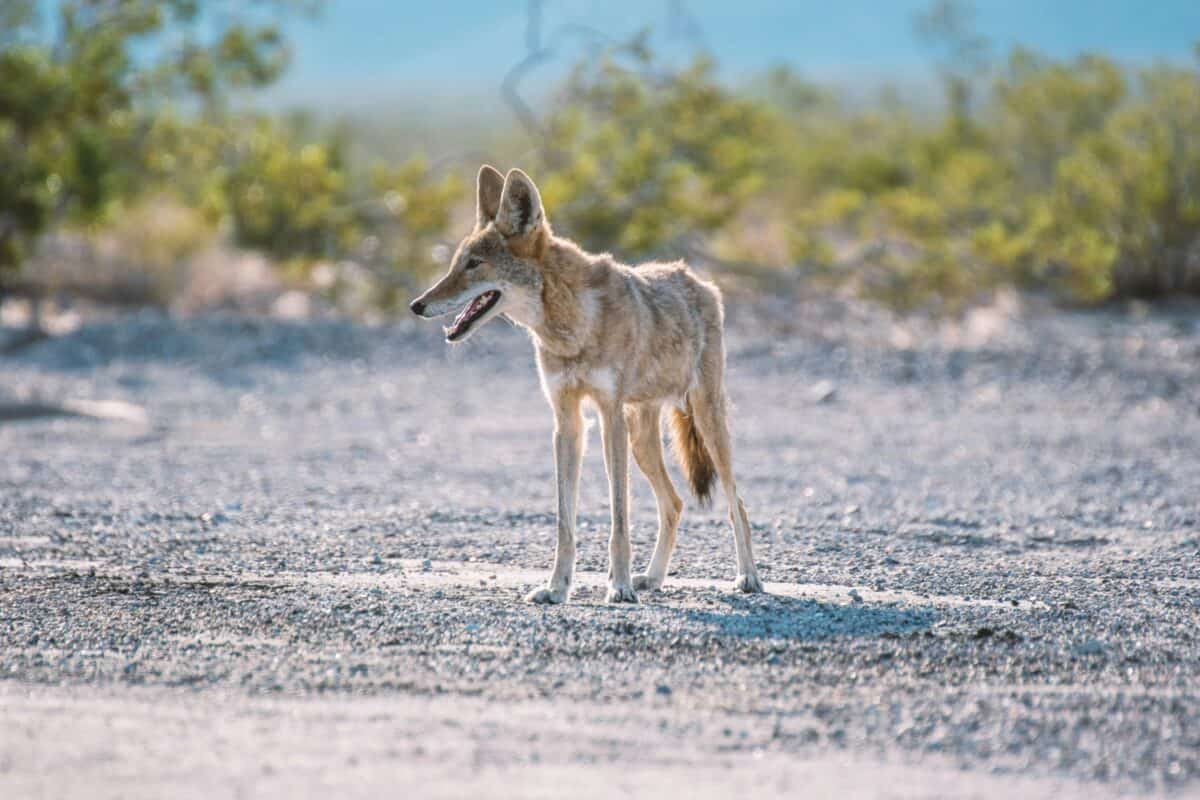
The coyote (Canis latrans) has earned its reputation as one of the most adaptable mammals in North America, particularly in desert regions. With its distinctive pointed ears, slender muzzle, and bushy, black-tipped tail, this medium-sized canid weighs between 20-50 pounds and sports a grizzled gray or reddish-gray coat that provides excellent camouflage among desert scrub. Unlike many desert animals that have specialized to extreme conditions, coyotes have succeeded through remarkable adaptability and opportunistic behavior, allowing them to thrive across diverse landscapes from remote deserts to urban environments.
In desert ecosystems, coyotes display impressive physiological adaptations that enable them to conserve water and tolerate extreme temperatures. They can subsist on minimal water intake, extracting moisture from their food sources when necessary. Their omnivorous diet includes everything from rabbits and rodents to insects, fruits, and carrion—whatever resources are available. Coyotes are most active during dawn and dusk, reducing exposure to the desert’s scorching daytime temperatures. Their high intelligence and problem-solving abilities have contributed to their success, making them one of the few native predators whose range has expanded despite human development across the American Southwest.
The Iconic Roadrunner: More Than a Cartoon Character
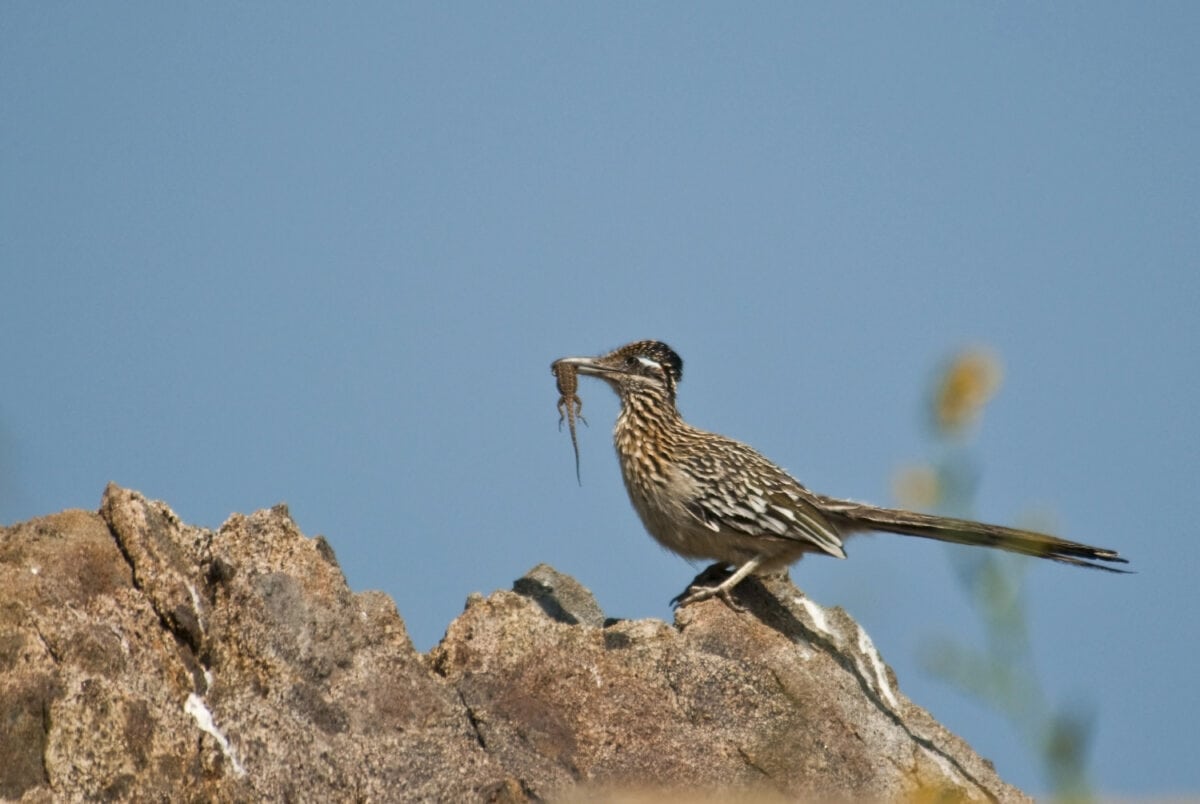
Despite its cartoon fame, the greater roadrunner (Geococcyx californianus) is far more fascinating in reality than its animated counterpart. Standing about 2 feet tall with a distinctive crest, long tail, and mottled brown plumage, this ground-dwelling cuckoo has become an emblem of the American desert. Roadrunners can reach speeds up to 20 miles per hour—not as fast as their cartoon portrayal suggests, but impressive enough to make them efficient hunters. Their X-shaped footprint (with two toes pointing forward and two backward) is distinctive among desert wildlife and perfectly adapted for stability and speed while running across sandy terrain.
Roadrunners have evolved remarkable physiological adaptations for desert survival. To conserve water, they reabsorb water from their waste before excretion and can obtain most of their hydration needs directly from their prey. They’re omnivorous opportunists, feeding on insects, lizards, small mammals, fruits, and occasionally even rattlesnakes, which they kill with impressive hunting technique—repeatedly striking the snake’s head while shielding themselves with their wings. During cold desert nights, roadrunners lower their body temperature by up to 10°F, entering a state of torpor to conserve energy, then warm themselves in the morning sun by exposing dark patches of skin that absorb solar heat—a perfect example of desert adaptation.
The Desert Tortoise: Ancient Survivor of Harsh Climates
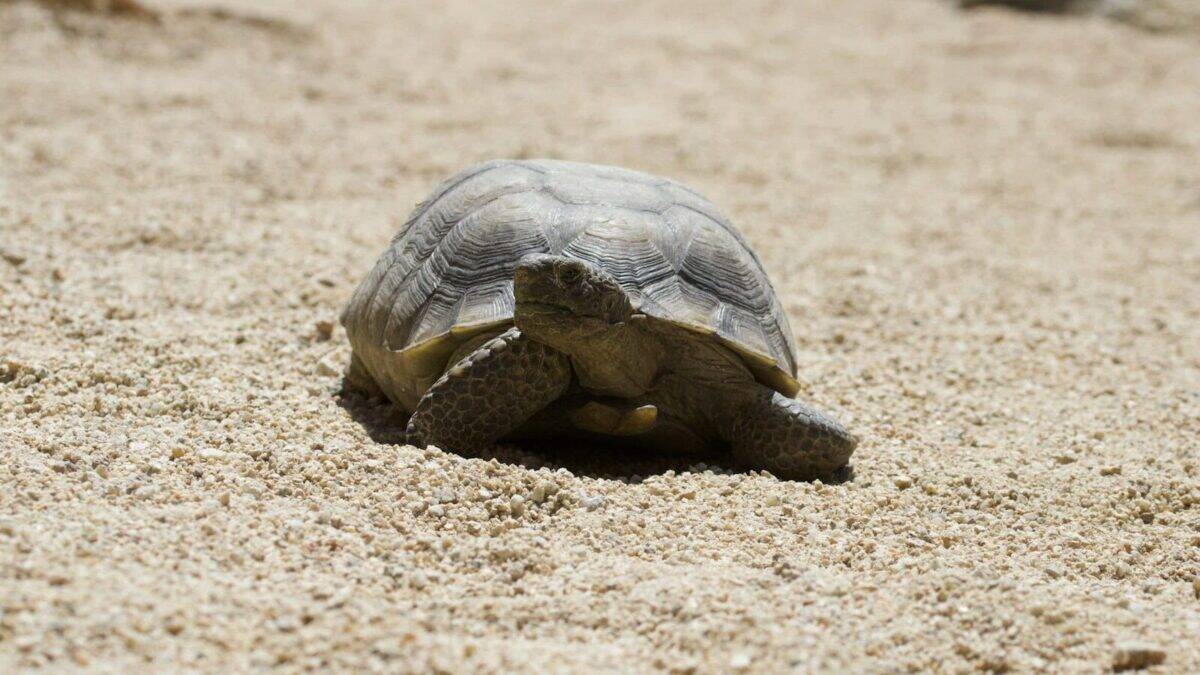
The desert tortoise (Gopherus agassizii) represents one of the desert’s most remarkable success stories, having evolved over millions of years to thrive in the harshest conditions of the American Southwest. These gentle reptiles can live up to 80 years in the wild and feature a high-domed shell measuring 9-15 inches, sturdy elephant-like legs, and specialized shovel-shaped front limbs perfect for digging. Their existence in the desert is a masterclass in resource conservation—they can go a year without access to water and can lose up to 40% of their body weight during drought, recovering when water becomes available again.
Desert tortoises spend roughly 95% of their lives in underground burrows, which they excavate up to 30 feet long and 9 feet deep. These burrows create crucial microhabitats that maintain stable temperatures despite extreme surface conditions, benefiting not only the tortoise but also many other desert species that share these shelters. Unfortunately, these remarkable survivors now face numerous threats, including habitat destruction, road mortality, and upper respiratory tract disease. Listed as threatened under the Endangered Species Act since 1990, the desert tortoise has become a flagship species for conservation efforts throughout the Mojave and Sonoran deserts, highlighting the fragility of desert ecosystems despite their inhabitants’ impressive adaptations.
The Gila Monster: Venomous Desert Dweller
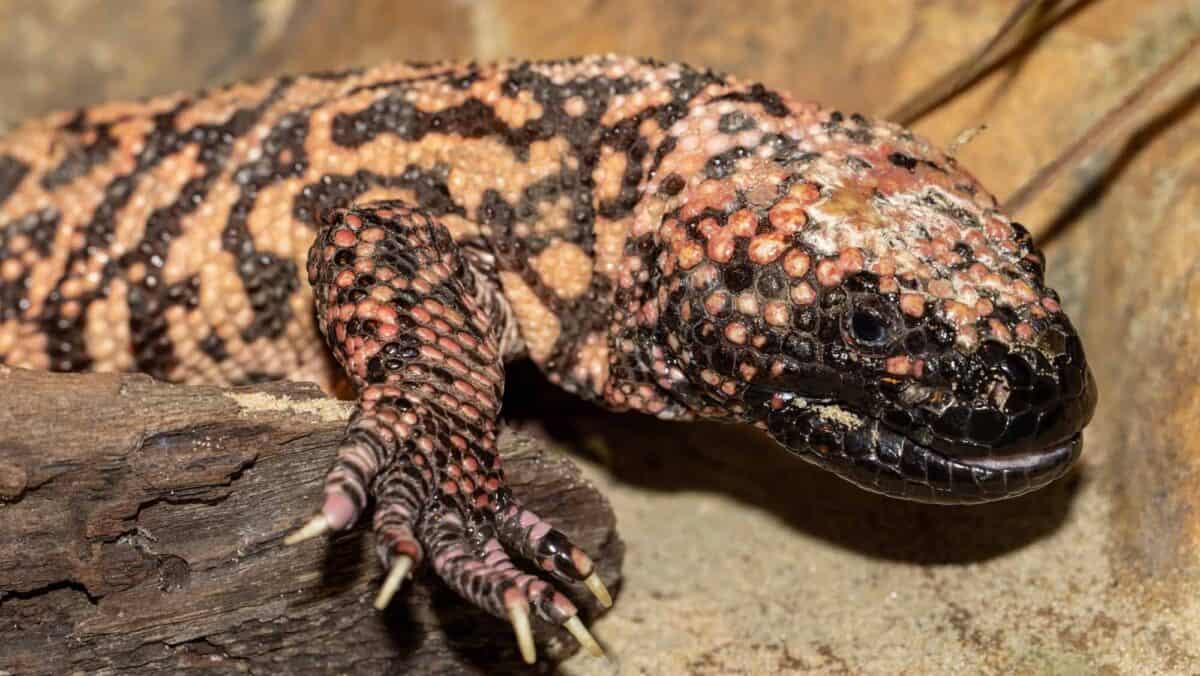
The Gila monster (Heloderma suspectum) stands as one of only two venomous lizard species in the world and the only one native to the United States. With its striking black body adorned with distinctive pink, orange, or yellow bead-like patterns, this hefty lizard (typically weighing 1-5 pounds and reaching up to 2 feet in length) presents an unmistakable appearance. Unlike the quick strikes of venomous snakes, the Gila monster delivers venom through a chewing motion, allowing toxins from specialized glands to flow into wounds through grooved teeth in its lower jaw. While painful and potentially dangerous to humans, fatalities are extremely rare, with no confirmed deaths in modern medical history.
Perfectly adapted to desert life, Gila monsters spend up to 95% of their time underground or in rock shelters, emerging primarily during the spring breeding season and monsoon periods. They’ve evolved remarkable metabolic efficiency—a single large meal can sustain them for months, storing fat in their tails and bodies. Their specialized kidneys excel at conserving water, while their thick skin minimizes water loss through evaporation. Additionally, their venom may serve not only as a defense mechanism but also to help subdue prey, which includes small mammals, birds, and eggs. Protected in all states where they occur, Gila monsters face threats from habitat destruction and illegal collection for the exotic pet trade, making conservation efforts crucial for this iconic desert reptile.
The Jackrabbit: Masters of Desert Heat Regulation

The black-tailed jackrabbit (Lepus californicus) and the antelope jackrabbit (Lepus alleni) are not true rabbits but hares, distinguished by their large size, long limbs, and distinctive oversized ears that can measure up to 7 inches long. These remarkable ears serve a crucial purpose beyond excellent hearing—they’re packed with blood vessels that allow jackrabbits to regulate their body temperature in extreme desert heat. By directing blood flow to their ears and positioning them to catch the slightest breeze, jackrabbits can dissipate excess body heat, functioning essentially as natural radiators. This adaptation enables them to remain active during daytime hours when many desert animals must retreat to cooler shelters.
Jackrabbits have mastered desert survival through both physical and behavioral adaptations. Their powerful hind legs allow them to reach speeds up to 40 mph and execute impressive 10-foot leaps, making them difficult targets for predators. Rather than digging burrows, they create shallow depressions in the soil called “forms” where they rest during the day, remaining vigilant with eyes positioned high on their head for a near-360-degree field of vision. They obtain most of their water from their diet of desert vegetation, with specialized digestive systems that can extract maximum moisture and nutrients from even the driest plants. As important prey species, jackrabbits play a vital ecological role, supporting populations of coyotes, bobcats, eagles, and other desert predators while helping to control vegetation through their feeding habits.
The Majestic Bighorn Sheep: Conquerors of Desert Mountains

Desert bighorn sheep (Ovis canadensis nelsoni) represent nature’s perfect blend of grace, power, and adaptation to extreme environments. Males (rams) are distinguished by their massive curved horns that can weigh up to 30 pounds, while females (ewes) display smaller, more slender horns. With specialized hooves featuring hard outer edges for traction and soft centers for grip, these magnificent ungulates navigate precipitous desert mountain terrain with remarkable agility, easily scaling cliffs that would be impossible for most other large mammals. Their tan coats blend perfectly with desert rock formations, providing camouflage against predators like mountain lions.
Bighorn sheep have evolved impressive physiological adaptations for desert life, including highly efficient kidneys that minimize water loss and the ability to lose up to 30% of their body weight through dehydration and recover completely when water becomes available. They obtain moisture from desert vegetation and can go for days without drinking when necessary. Once abundant throughout the Southwest, desert bighorn populations declined dramatically in the early 20th century due to hunting, disease (particularly pneumonia transmitted from domestic sheep), habitat fragmentation, and competition with non-native species. Conservation efforts have helped populations recover in many areas, though they remain vulnerable. The bighorn’s ability to thrive in some of the most inhospitable mountain ranges in North America demonstrates the remarkable adaptability of desert wildlife.
The Sonoran Desert Toad: Toxic Desert Amphibian
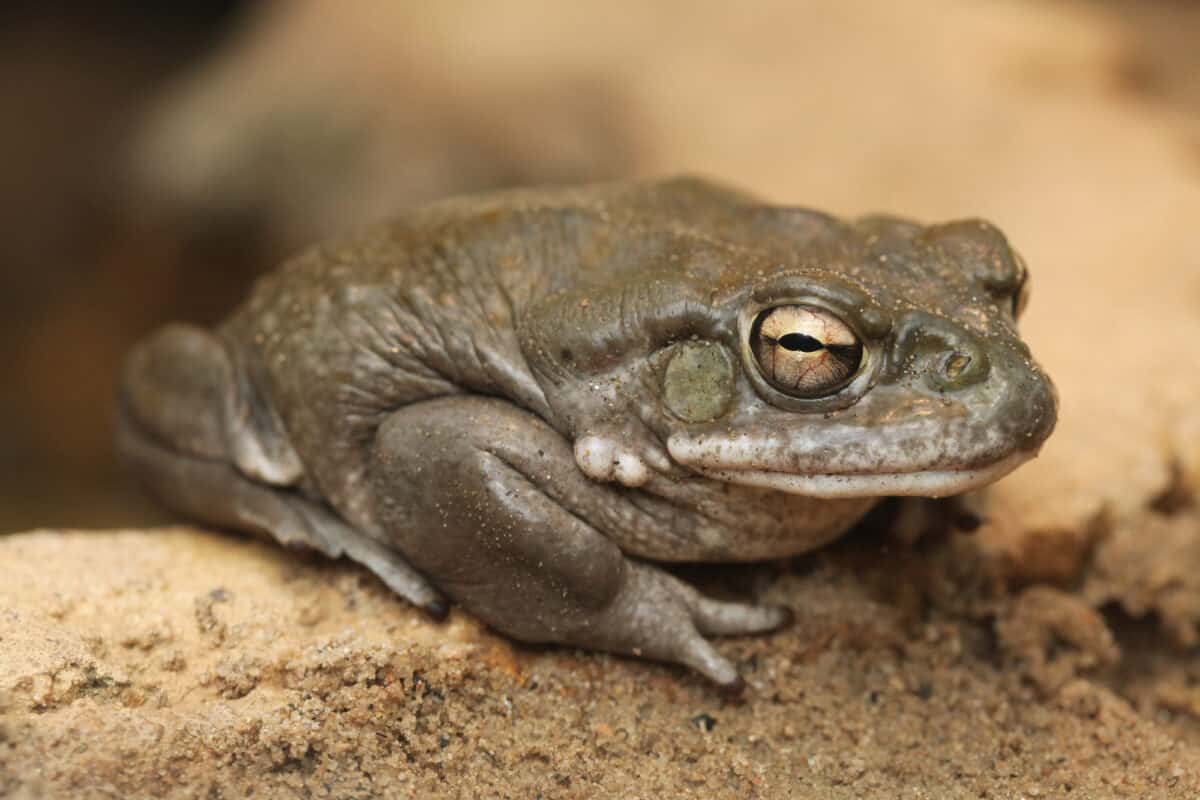
The Sonoran Desert toad (Incilius alvarius), also known as the Colorado River toad, stands as North America’s largest native toad species, reaching lengths of up to 7.5 inches and weighing over a pound. With its olive-green to dark brown coloration, this imposing amphibian might seem out of place in the arid desert, but it has evolved remarkable adaptations for survival. Most notably, large parotoid glands behind its eyes and smaller glands on its limbs produce powerful toxins containing 5-MeO-DMT and bufotenin—compounds that can cause serious illness or death in predators and have been misused by humans for their psychoactive properties, making this one of the most dangerous toads to handle in North America.
Despite living in one of the driest regions of the United States, the Sonoran Desert toad has mastered the art of desert survival through specialized behavior. During the intense dry seasons, these toads remain dormant underground for up to 9 months of the year, emerging only during the summer monsoon season when temporary pools form. They can lose up to 40% of their body weight during estivation (summer dormancy) and rapidly rehydrate when rains arrive. Their breeding is explosive and synchronized with rainfall, with females laying up to 8,000 eggs that develop rapidly in temporary pools before they dry up. While still relatively common throughout their range, these remarkable amphibians face threats from habitat destruction, road mortality during migration, and illegal collection, highlighting the precarious balance of desert ecosystems.
The Kit Fox: Nocturnal Desert Specialist

The kit fox (Vulpes macrotis), particularly the desert-dwelling subspecies known as the desert kit fox, epitomizes elegant desert adaptation in canid form. Weighing just 3-5 pounds, these diminutive foxes sport disproportionately large ears that serve dual purposes—exceptional hearing for detecting prey moving underground and efficient heat dissipation in high temperatures. Their compact bodies, measuring only about 20 inches long with an additional 12-inch tail, allow them to navigate the tight confines of their underground burrow systems. Their pale cream to light gray coat reflects sunlight during the day and provides camouflage against the desert soil and vegetation, while their fur-covered foot pads protect against hot sand while muffling their footsteps during hunting.
Kit foxes have mastered desert survival through remarkable behavioral and physiological adaptations. Strictly nocturnal, they avoid the punishing daytime heat by retreating to complex burrow systems that maintain stable, cooler temperatures. These engineering marvels feature multiple entrances, escape tunnels, and separate chambers for different purposes. Kit foxes can meet almost all their water requirements through their diet of rodents, insects, birds, and occasional plant material, with specialized kidneys that produce highly concentrated urine to conserve water. They’re incredibly efficient hunters, capable of detecting rodents moving underground and pouncing with precision. Despite these impressive adaptations, kit fox populations face significant threats from habitat loss, vehicle strikes, and predation by larger animals, including coyotes and free-roaming dogs, making conservation efforts essential for their continued survival.
The Javelina: Desert’s Pig-Like Forager
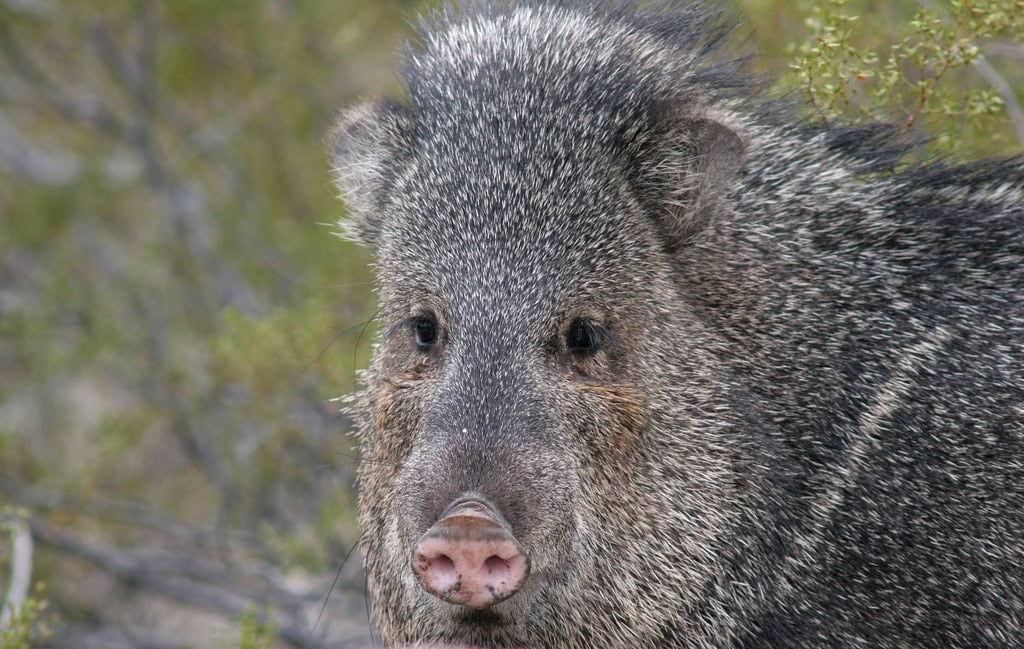
The javelina or collared peccary (Pecari tajacu) is often mistaken for a wild pig but belongs to an entirely different family native to the Americas. With their pig-like appearance, distinctive white collar marking, and musky scent glands, these social mammals have become iconic desert dwellers throughout the Sonoran and Chihuahuan deserts. Weighing between 35-60 pounds, javelinas travel in family groups called “squadrons” of 8-12 individuals, maintaining strong social bonds and defending their territory through collective action. Their poor eyesight is compensated by an exceptional sense of smell, with scent glands on their backs that they rub against rocks and plants to mark territory and communicate with other javelinas.
Perfectly adapted to desert life, javelinas have evolved specialized digestive systems that can process fibrous desert vegetation, including prickly pear cactus, which forms a significant portion of their diet. Their pig-like snouts are powerful tools for digging up roots, bulbs, and insects, while their sharp canine teeth can deliver serious defensive bites when threatened. Unlike many desert mammals, javelinas have relatively inefficient cooling mechanisms and must seek shade during the hottest parts of the day, becoming most active during early morning and evening hours. They require access to water sources at least every few days, making them somewhat less drought-resistant than other desert specialists. Once heavily hunted, javelinas now enjoy protected game status throughout most of their range, though they increasingly face challenges from habitat fragmentation and human-wildlife conflicts as development expands into desert ecosystems.
The Kangaroo Rat: Champion of Water Conservation
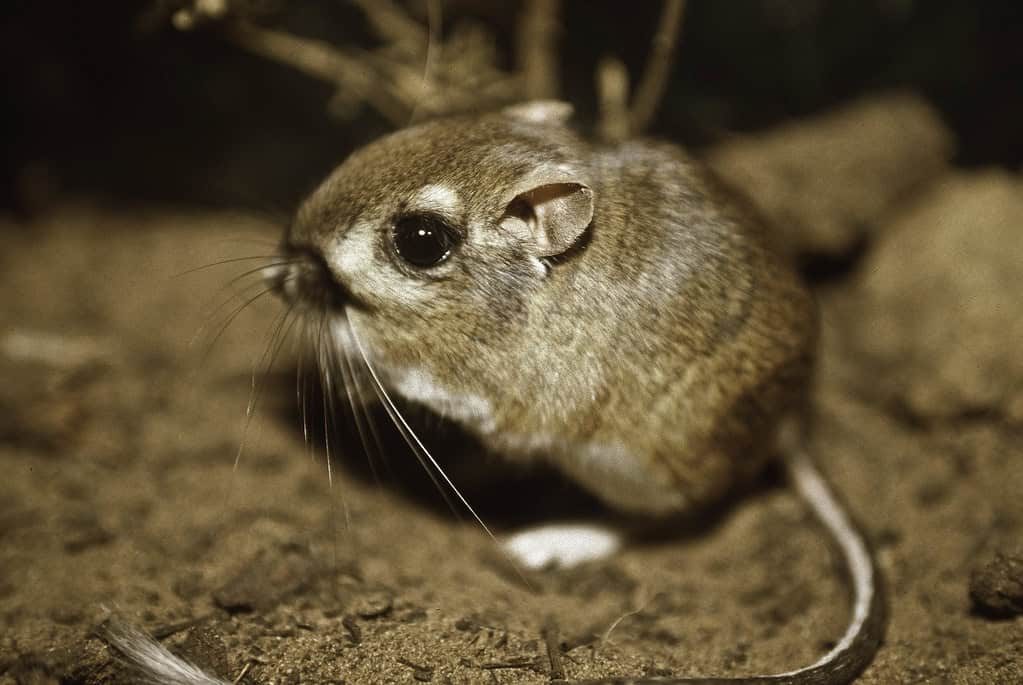
The desert kangaroo rat (genus Dipodomys) represents perhaps the ultimate example of evolutionary adaptation to extreme aridity. These remarkable rodents, weighing just 2-4 ounces, have achieved what seems biologically impossible—they can survive their entire lives without ever drinking a single drop of water. Instead, they extract all necessary moisture from the dry seeds they consume through a metabolic process called oxidative water production. Their specialized kidneys produce the most concentrated urine of any mammal, while their nasal passages recapture moisture from exhaled breath. This water conservation is so efficient that kangaroo rats actually produce more water metabolically than they lose through excretion and respiration—a true miracle of desert adaptation.
Beyond their unparalleled water efficiency, kangaroo rats display numerous other desert specializations. Their oversized hind feet enable them to leap up to 9 feet in a single bound when evading predators, while their long tails serve as balancing organs during these acrobatic jumps. They’re strictly nocturnal, spending daylight hours in complex burrow systems that maintain humidity and shield them from extreme temperatures. Their large eyes and excellent hearing help them detect predators, particularly owls, while specialized fur-lined cheek pouches allow them to transport seeds efficiently to underground storage chambers. These seed caches serve not only as food reserves but also contribute to desert ecology by dispersing and planting seeds when some stores are forgotten. Despite their impressive adaptations, many kangaroo rat species face conservation challenges due to habitat loss and fragmentation, with several desert species already listed as endangered.
The Western Diamondback Rattlesnake: Desert’s Venomous Guardian

The western diamondback rattlesnake (Crotalus atrox) embodies both the beauty and danger of American desert ecosystems. Growing up to 7 feet long, though typically averaging 3-5 feet, this imposing pit viper features the distinctive diamond pattern that gives it its name, a broad triangular head housing venom glands, heat-sensing pits between its eyes and nostrils, and the iconic rattle made of interlocking keratin segments that adds a new segment with each shedding. Their venom is primarily hemotoxic, destroying tissue and affecting blood clotting, making them responsible for more snakebite fatalities in the United States than any other species.
Despite their fearsome reputation, western diamondbacks are not aggressive by nature and typically rattle as a warning before striking. They play a crucial role in maintaining ecological balance by controlling rodent populations, which helps prevent the spread of disease and crop damage. Found across the arid landscapes of the southwestern U.S. and northern Mexico, these snakes are well-adapted to extreme conditions, often lying motionless and camouflaged to ambush prey. As human development encroaches on their habitats, understanding and respecting these misunderstood reptiles is key to peaceful coexistence and preserving the delicate desert ecosystems they help sustain.
- From Coyotes to Roadrunners: Wild Faces of the American Desert - August 11, 2025
- Why Capybaras Are the Most Chill Animals on Earth - August 11, 2025
- What Makes Vervet Monkeys a Pest in Some Tourist Areas? - August 11, 2025

